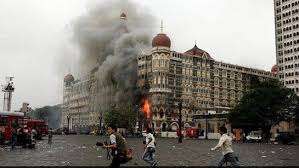November 26, 2008, was one of the darkest days India has ever witnessed. Referred to as “26/11,” this date marks coordinated terrorist attacks on Mumbai that left a scar on the nation.
Within four days, 10 terrorists attacked different prestigious places in the city, including the Taj Mahal Palace Hotel, Oberoi Trident, Nariman House, and Chhatrapati Shivaji Maharaj Terminus. Over 170 people killed in the violence, most of whom were civilians, security personnel, and foreign nationals; hundreds more injured.
A City Under Siege
The scale and audacity of the attacks shocked the world. The attackers, linked to the Pakistan-based group Lashkar-e-Taiba, carried out their assault using firearms and explosives, taking hostages and spreading chaos across Mumbai. In particular, the Taj Mahal Palace Hotel came to be seen as a symbol of the disaster: it sustained extensive damage while security forces worked round the clock to neutralize the attackers.
In this sea of horrors, heroic tales started emerging. The security forces, including the National Security Guard and the Mumbai Police, were in a fatal combat as they tried to rescue the hostages and bring an end to the nightmare. Extraordinary tales also emerged that of civilians and members of the hotel staff, on being faced with danger, risked everything to help and ensure other lives would be spared.
November 26 each year makes the nation march in sober tributes to the victims and heroes of 26/11. Memorial services, candlelight vigils, and public events across the nation pay tributes and reaffirm the resilience of the nation.
This attack was also a wake-up call that brought about radical reforms in India’s counter-terrorism efforts and further fortified international cooperation against terrorism.

More Stories
Maharashtra records first suspected death due to Guillain-Barré Syndrome; cases in Pune cross 100
U.S. Supreme Court Approves Extradition of 26/11 Convict Tahawwur Rana to India
Tragic Accident in Mumbai Kills 23-Year-Old Television Actor Aman Jaiswal